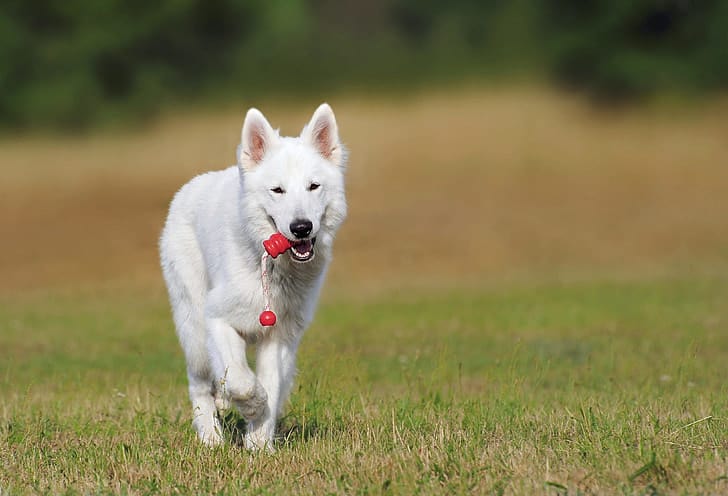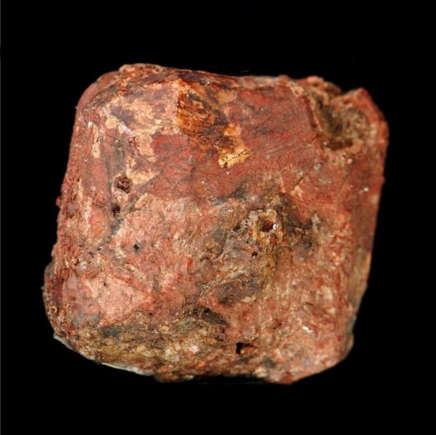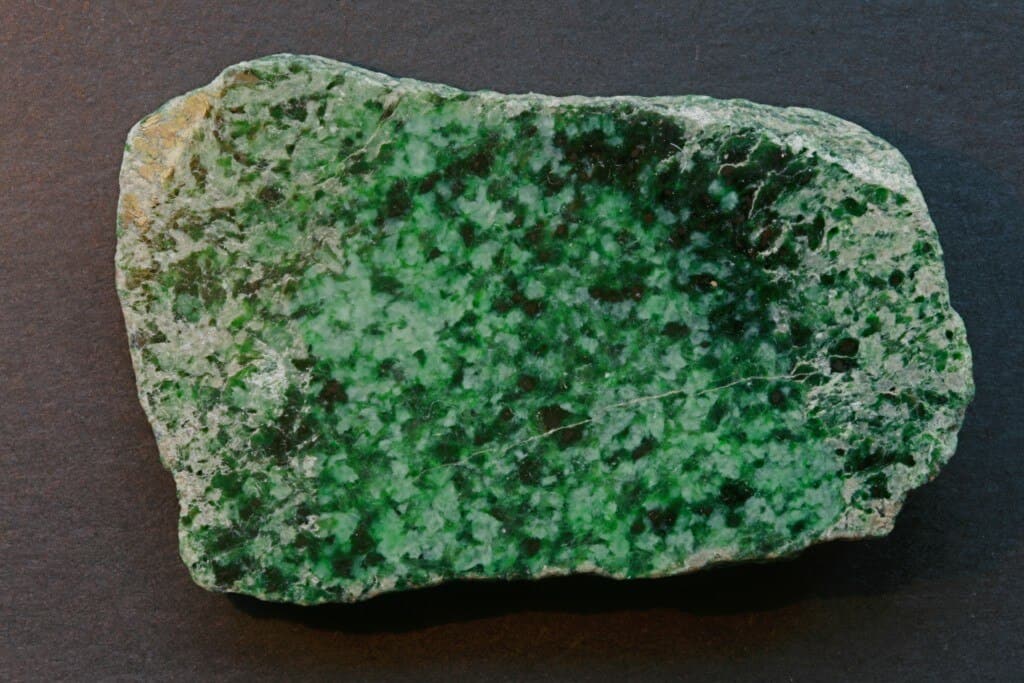A popular breed known for their strength, intelligence and loyalty, German Shepherds are beautiful dogs that work well in various situations—including law enforcement roles, dog shows and in the home as beloved family pets. While many people are familiar with the standard German shepherd’s tan and black coat, few realize that German Shepherds come in a wide range of mesmerizing colors. It might be difficult to spot these unique dogs on the street or even in competitions due to various regulations, but this list has that covered. Read below to discover some of the rarest German Shepherd colors around.
Deep Red

Color Family: Red
Parent Genes: Recessive genes needed
Red is the result of a recessive gene, but it’s pretty common, especially in a sable pattern that replaces the German Shepherd’s tan color with a red hue paired with black. In general, geneticists note that red is one of the least recessive of the recessive genes, so to speak. Additionally, red dogs with a liver gene tend to fade over time so breeders might choose to keep fawn coated dogs away from red ones to preserve the color.
Fawn

Color Family: Red
Parent Genes: Recessive
Fawn-colored German Shepherds are fairly rare, but have been around for a long time. In many cases, they show up in litters when white German Shepherds breed with another color, suggesting a subsequent genetic mutation. Fawn falls under the sable color category, which encompasses various reds, but is significantly lighter—mimicking the fur of a baby deer. In particular, fawn is also known as ay sable. The fawn coat can blend with others in the signature German Shepherd spotted pattern, allowing for black, liver, etc. fawn color combinations.
Black

Color Family: Black
Parent Genes: Black paired black or another color.
While popular among pet owners, only 6.8 percent of German Shepherds are all black. Unlike white or other light colored German Shepherds, the American Kennel Club recognizes and allows all black German Shepherds to compete in dog competitions as they are not considered “undesirable” or “faulty.” They can occur from either two black parents or one black parent combined with another color.
White

Color Family: White
Parent Genes: Two white recessive genes
White-coated German Shepherds are the result of a recessive gene, making them fairly uncommon. The first recorded appearance of a white German Shepherd occurred in late nineteenth Germany during a breeding program. As with any recessive characteristic, white German Shepherds can still produce puppies with colors. Since these dogs are quite similar to the stereotypical German Shepherd, they behave the same way and don’t require extra care. With that said, the American Kennel Club has banned them from competing in dog shows, marking their color as a fault.
Grey

Color Family: Grey
Parent Genes: Agouti Gene/Red Gene
Silver/grey German Shepherds are fairly rare and differ greatly in appearance from the tan and black color combination typical for this breed. Notably, there’s no such thing as a silver “gene” within German Shepherd DNA. Instead, grey German Shepherds are the result of an agouti gene interacting with a red-hued color pool. The resulting mix dilutes the dog’s fur into a grey or tan appearance.
Blue

Color Family: Grey
Parent Genes: Black and both parents must carry the recessive gene
Blue German Shepherds are the result of a recessive gene combination, similar to their liver-coated counterparts. The main difference between their genetics comes down to how the “blue” and “liver” genes interact with other colors. The b locus gene completely blocks the black gene, while the gene that causes blue fur only partially blocks the black gene. As a result, blue German Shepherds are significantly darker than liver ones. Notably, like a Russian Blue cat, these dogs are not literally blue, but feature a grey coat with a bluish tinge.
Liver

Color Family: Reds and browns
Parent Genes: Any but both parents must possess the recessive gene for liver.
The result of a combination of the recessive gene B locus, liver-colored German shepherds are rare among the breed. The liver shade does not affect pattern, however, so a liver coat comes in a few combinations. The most common colors found in liver German Shepherds include solid brown, liver and tan, and liver and white. These often manifest in the same pattern found in typical tan and black German Shepherd. Additionally, while some other German Shepherd colors change over time, a liver coat stays the same throughout the dog’s life.
Panda Pattern

Color Family: Black & White
Parent Genes: KIT Gene mutation
A German Shepherd with a panda pattern, otherwise known as “Piebald,” has the rarest coat color combination. As the name suggests, these German Shepherds feature coats with a black and white symmetrical pattern. In general, this type of dog is genetically similar to the average tan and black German Shepherd, the only difference being in its color combinations—originating from the KIT Gene mutation that causes white spotting.
This article originally appeared on Rarest.org.
More from Rarest.org
10 Rarest Elements in the Universe

Within the vast expanse of the universe lie elements that are exceedingly rare, elusive, and intriguing. From radioactive isotopes to fleeting traces found in ores, these elements capture the imagination of scientists and enthusiasts alike. Read More
The 15 Most Expensive Diamond Colors in the World

Diamonds, the epitome of luxury and desirability, come in a spectrum of colors, each with its own unique allure and price tag. The value of a diamond often hinges on its color, with rarity and demand dictating its worth in the global market. Read More
10 Rarest Gems in the World

Over 300 documented gemstones worldwide, ranging from readily available or poor quality to extremely rare, pure, and expensive, fetching amazingly high prices in certain cases. The Earth created these stones over millions of years in many different conditions, composed of various organic materials such as rocks and minerals. Read More
